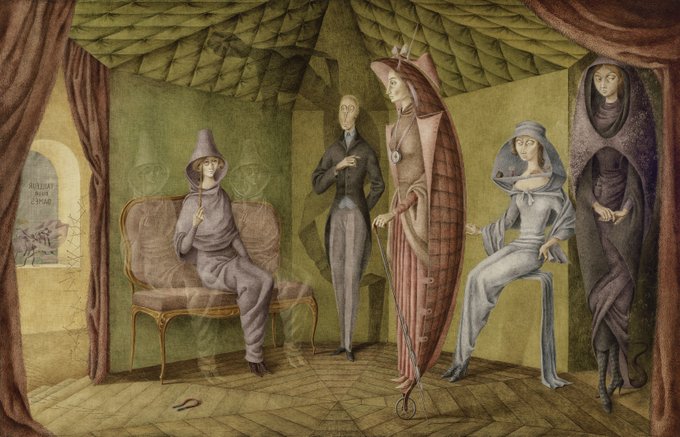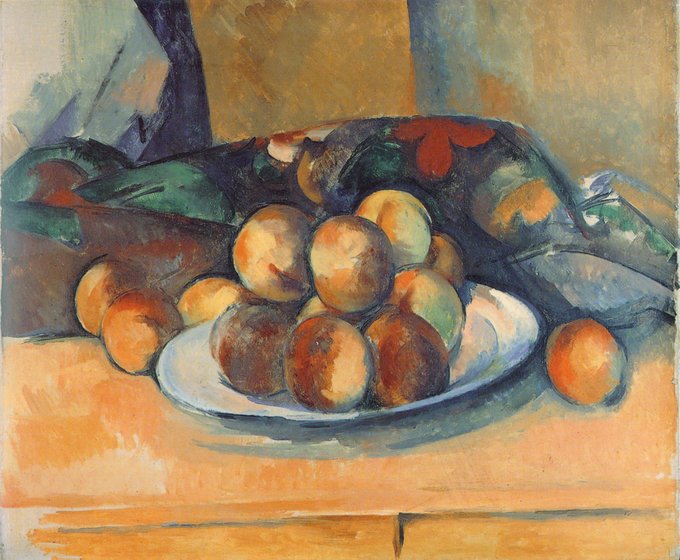"Find things beautiful as much as you can, most people find too little beautiful." —Vincent #VanGogh, born #OnThisDay in 1853
🎨: "Ravine" (1889), oil on canvas
A Sunday timeline cleanse, courtesy of Paul #Signac ☁️ ⛵
🖼️: "Antibes, The Pink Cloud" (1916), oil on canvas, Isabelle and Scott Black Collection
"The stuff of fashion dreams" ✨ 👗
@voguemagazine connects our recently acquired work by Remedios Varo, “Tailleur pour dames,“ to some of this fall’s runway collections: https://t.co/FFgVAayjeu
© 2022 Remedios Varo, Artists Rights Society (ARS), New York / VEGAP, Madrid
In this dramatic close-up of the Arrest of Christ, each person is shown reacting in the moment after Judas's kiss revealed Christ to the soldiers; St. Peter raises his knife to smite off the ear of an enemy, others recoil in horror.
🎨: "The Taking of Christ" (~1620), Flemish
We're excited to announce that "Tailleur pour dames" (1957), a major #Surrealist work by #RemediosVaro, has entered the MFA's collection!
The new acquisition will go on view in the Lower Rotunda beginning March 17.
© Estate of Remedios Varo / Artists Rights Society
Large, intricately designed tattoos (horimono or irezumi) became a hallmark of Japanese urban culture in the early 19th century.
Explore their iconography and visual splendor in our exhibition "Tattoos in Japanese Prints," on view now and included with general admission.
“When you take a flower in your hand and really look at it, it's your world for the moment. I want to give that world to someone else.” — #GeorgiaOKeeffe, born #OnThisDay in 1887 🤍
🖼: “Calla Lily on Grey” (1928)
© Georgia O'Keeffe Museum / Artist Rights Society (ARS)
Beware—monsters are everywhere 😱 Happy #Halloween!
🖼️: "The Sleep of Reason Produces Monsters (El sueño de la razon produce monstruos), Caprichos" 43 (1797–99), Francisco #Goya
Paul Cézanne studied the works of earlier artists and admired Jean-Baptiste-Simeon Chardin, whose still lifes feature an air of informality, as if he were working in his kitchen rather than his studio. By contrast, Cézanne’s settings are more ambiguous, space flexing and tipping.












